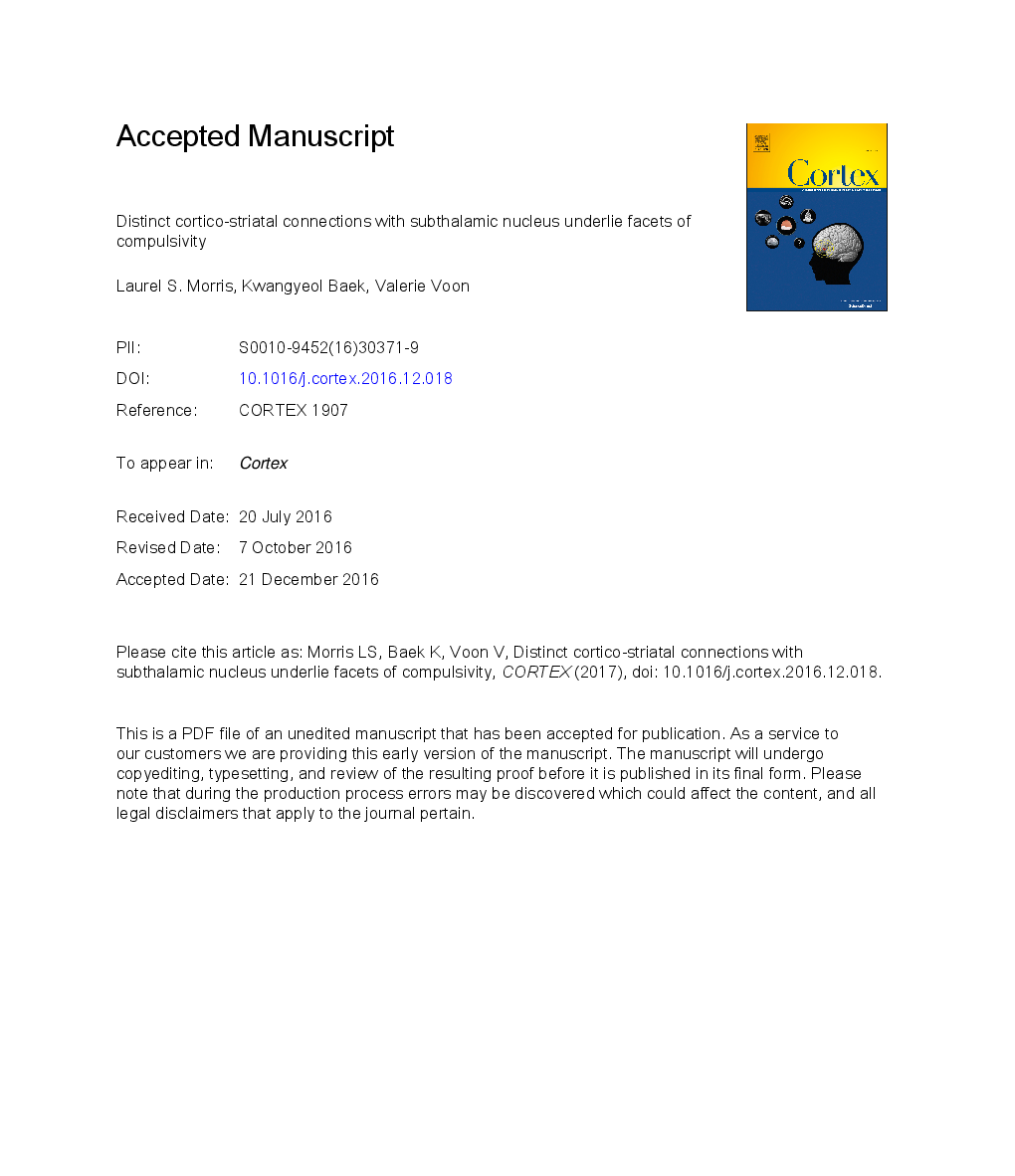ترجمه فارسی عنوان مقاله
ارتباطات مختلط کورتیکواستروییات با هسته سوپتوالامیک، چهره های سازش را پایه ریزی می کند
عنوان انگلیسی
Distinct cortico-striatal connections with subthalamic nucleus underlie facets of compulsivity
| کد مقاله | سال انتشار | تعداد صفحات مقاله انگلیسی |
|---|---|---|
| 153235 | 2017 | 15 صفحه PDF |
منبع

Publisher : Elsevier - Science Direct (الزویر - ساینس دایرکت)
Journal : Cortex, Volume 88, March 2017, Pages 143-150

